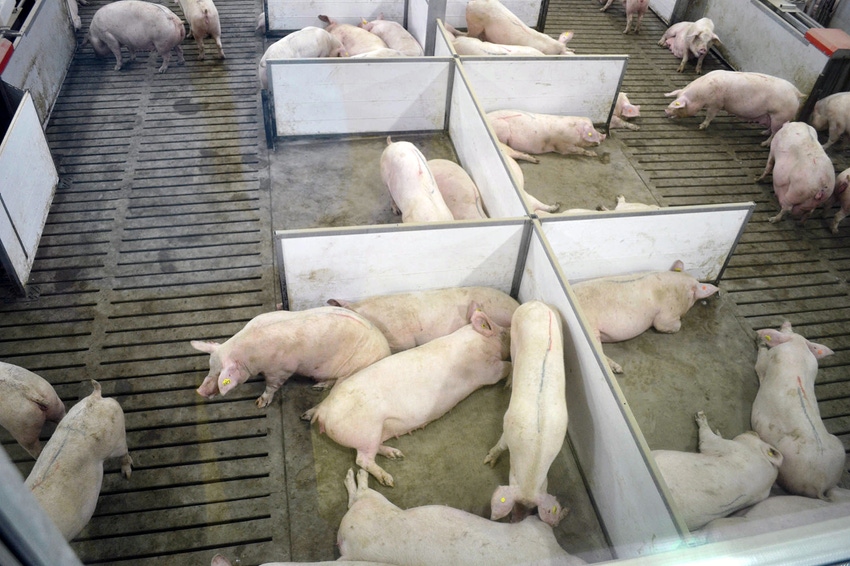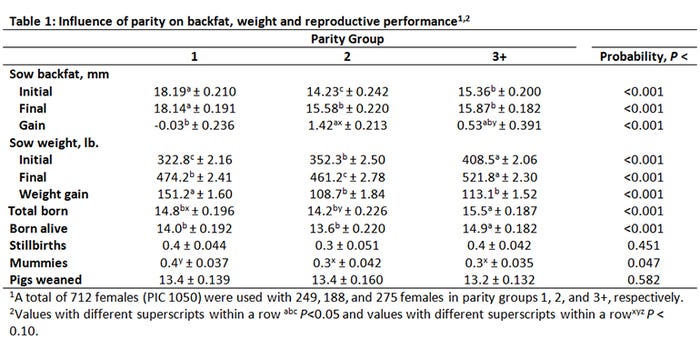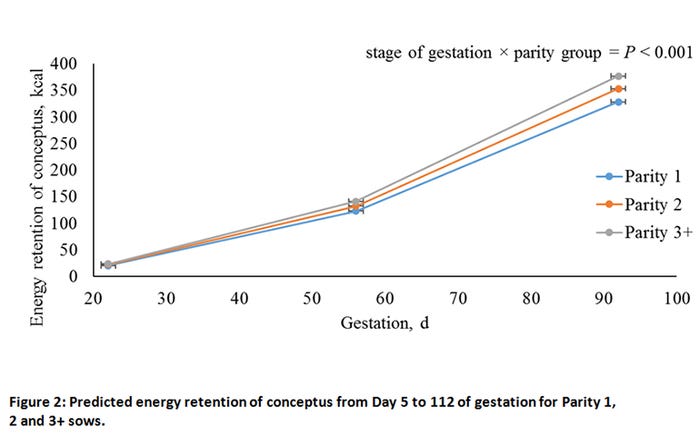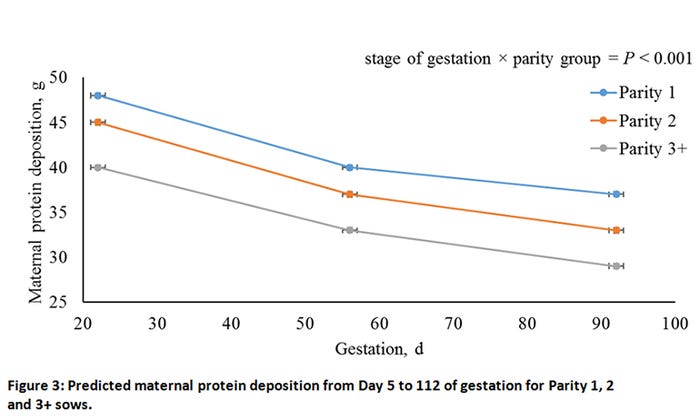Parity, gestation stage impact sows’ maternal growth and feed efficiency
It is apparent that sow gestation nutrient requirements are affected largely by requirements of the sow for maintenance and maternal protein and lipid deposition.
July 20, 2017

By Lori Thomas, Robert Goodband, Mike Tokach, Steve Dritz, Jason Woodworth and Joel DeRouchey, Kansas State University
Previous research regarding gestating sow nutrient requirements has been used to develop models based on the sow’s body condition, parity and stage of gestation. The models predict energy requirements and utilization for individual sows where priority is given to satisfy energy requirements for body maintenance functions, growth of conceptus and maternal body protein deposition with nutrients above these requirements available for maternal lipid deposition. In cases when energy is insufficient, maternal body lipid is mobilized and used as an energy source.
Studies have indicated that the initial stage of gestation seems to be the sole period during which body reserves can be reestablished. However, data are limited pertaining to the application of these models in today’s commercial sow herds to determine maternal growth and efficiency of feed usage of modern sows. This information will allow for a better understanding of how females use energy provided during gestation and their metabolic state upon entry into the farrowing house.
Therefore, we conducted a study to evaluate the effect of parity and stage of gestation on maternal weight gain and efficiency of feed use in group-housed gestating sows from a commercial sow farm.
A total of 712 females (Camborough, PIC, Hendersonville, Tenn.) were group-housed from Day 5 to 112 of gestation and individually fed with electronic sow feeders. The study was completed at Thomas Livestock Co., Broken Bow, Neb. Feed intake and body weight were recorded daily throughout gestation via the ESF and a scale located in an alleyway just after sows exited the feeding station. Gilts (Parity 1) and sows were offered 4.4 and 5.0 pounds of feed per day (4.7 and 5.3 mega calories net energy per day), respectively. Maternal weight gain, not including products of conceptus, and feed efficiency was predicted using a series of equations to model nutrient utilization in gestation. Data were divided into three parity groups: 1, 2, and 3+ and gestation was divided into three periods: Day 5 to 39, 40 to 74 and 75 to 109.
The overall differences in backfat change, weight change (including fetal and uttering growth) and reproductive performance were influenced by parity (Table 1). Gilts gained approximately 150 pounds during gestation with little to no change in backfat depth. Parity 2 and 3+ females on average gained 110 pounds with slight increases in backfat depth over the course of gestation. Reproductive performance of this herd was excellent with the number of pigs born alive at 14.0, 13.6 and 14.9, and number of pigs weaned at 13.4, 13.4 and 13.2 for Parities 1, 2 and 3+, respectively.

Next, energy requirements were divided into tissue pools for maintenance, growth (maternal protein and fat deposition), and products of conceptus. Regardless of parity, maintenance requirements increased in each sequential period of gestation (Figure 1). This is because maintenance is derived based on body weight which increased during gestation. Parity 3+ sows had the greatest maintenance requirements as they were heavier than both Parity 1 and 2 females.

Like maintenance, the energy required for the growth of the conceptus also increased, with the greatest increase in late gestation (Figure 2). This would be expected as fetal growth is greatest during the last 30 days of gestation.

Because of the females’ increased energy requirements for maintenance and fetal growth, the predicted energy used for maternal protein and fat deposition decreased in each period of gestation, regardless of parity group (Figures 3 and 4). Parity 2 sows had the greatest energy use for maternal protein and fat deposition in all stages of gestation while Parity 1 sows had a negative energy balance during the final stage of gestation.


The decrease in energy available for maternal lipid deposition, and subsequent amount of maternal lipid deposition (Figure 4), as pregnancy increases is because this production system offered the same allowance of feed throughout the course of gestation within parity. In Parity 1 sows, during late pregnancy (Day 75 to 109 of gestation), feed intake was insufficient to prevent mobilization of body fat and maternal lipid reserves.
From the existing data, it is apparent that sow gestation nutrient requirements are affected largely by requirements of the sow for maintenance and maternal protein and lipid deposition, each of which is heavily influenced by parity and stage of gestation. Through the partitioning of each of these tissue pools, predictions indicate that Parity 1 sows are in a negative energy balance late in pregnancy. These findings would back up current recommendations that gilts should have their feed allowance increased from Day 90 of gestation through farrowing in order to prevent them from entering a negative energy balance; however, this may not be necessary in Parity 2 or older females.
Appreciation to Thomas Livestock Co., Broken Bow, Neb., for providing the animals and research facilities, and to Tim Friedel, Steve Horton and Jose Hernandez for technical assistance as well as Tim Kurbis, New Standard US Inc. (Sioux Falls, S.D.), and PIC (Hendersonville, Tenn.).
You May Also Like



